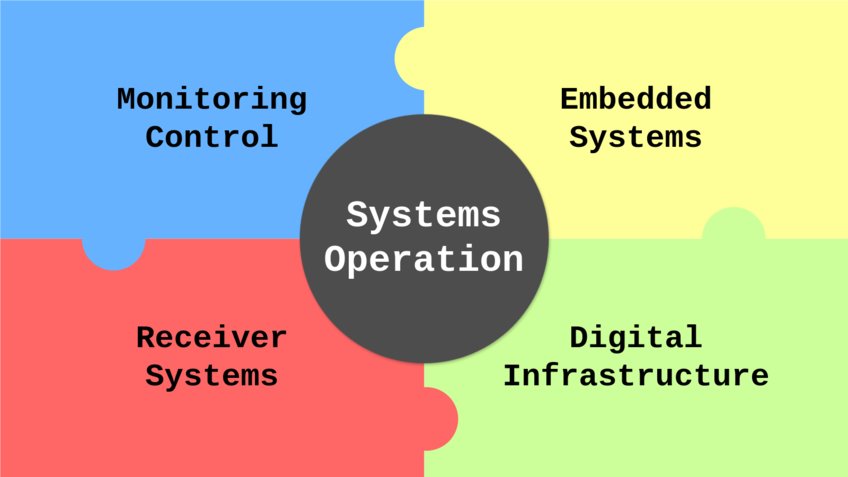
The Systems Operation Group
Integration, operation, asset-tracking, digitization and more.
The systems group is responsible for the integration and smooth operation of the systems developed in the department. It not only provides support for the receiver systems at the Effelsberg radio telescope, but also at the sites of our cooperation partners (e.g. the MeerKAT telescope in South Africa and the Thai National Radio Telescope in Thailand). The group is also actively involved in ongoing development processes and, through this involvement, works in a wide range of areas.
Our dedicated ITSM asset tracking tool iTop is instrumental in ensuring that any work performed on these systems remains transparent in the long term. Live monitoring of system parameters is realized via a monitoring and control application called gim (generic-interface-mpifr), a project spearheaded by the group. Another of the group's tasks is the implementation of a project aiming at the digitization of receiver systems and their infrastructure at the Effelsberg radio telescope. State of the art receiver systems digitize astronomical signals inside the receiver itself. Analog-to-digital converters (ADC) and field-programmable gate arrays (FPGA) are used for this purpose. The digitized data is then transported further in the form of standard network packets via high-speed Ethernet technology (up to 800 GBe). Furthermore, the systems group is responsible for planning and implementing a fiber-optic-based high-speed network infrastructure as well as setting up and maintaining a computing cluster.
The development of hardware and software components in the area of embedded systems is another core task of the group. This includes circuit board and housing designs as well as the programming of microcontrollers, FPGAs and computer software. Another field of activity for the group is high-precision timing. To facilitate this, various components such as hydrogen masers, GPS receivers and distribution and transmission systems are used. The group develops parts of this system independently and provides full support for it at the radio telescope in Effelsberg, as well as on a collaborative basis at other locations.
Our Projects
Our Group








